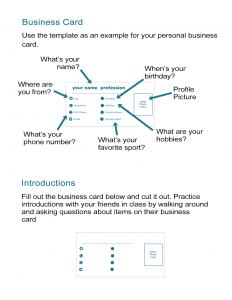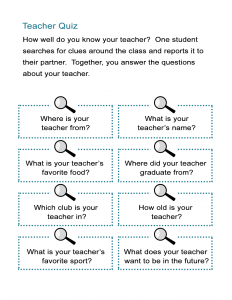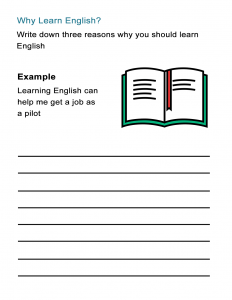3 Classroom Rules Worksheets for Your First Lesson

Your Introduction Class: Expectations, Rules, Handouts, Discipline
Let’s be honest.
Your first class is not what you’ll expect.
Your students will be shy. They’ll be uncomfortable. And they probably don’t want to be there. That’s where some ice breakers activities can help.
Or who knows? Maybe, they’ll give you a hard time and act up the entire class. Both are real possibilities.
Our advice: You’re wise to keep things simple. Keep a positive atmosphere. And make them feel comfortable using the Rassias method.
It’s your chance to help your students feel relaxed. So that’s why we’re here to help with 3 introduction classroom rules worksheets. From establishing class rules to common phrases, here are some great ways to teach your 1st class.
1. School Rules Poster

If you’re starting an introduction class for elementary school students, it’s the best time to establish rules in your classroom. In this case, it would be ideal to have a poster hanging up in your classroom with rules that you can reference.
For example, if a kid is not being respectful towards another student, we can reference the second rule in this list of rules. And if kids are making a mess in class, then we can reference the fourth rule in this list. Simple as that.
For classroom management and establishing discipline in the class, this is exactly what students need. It’s a list of classroom rules that students must abide by. Ideally, this is for kindergarten, elementary and early learners.
2. My Class, My Rules
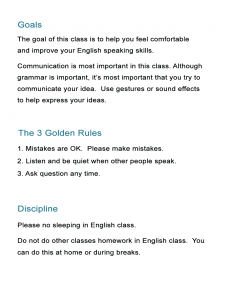
Your students are listening and attentive. It’s the best time to establish discipline in the classroom. For example, “sleeping in not allowed in class” is a good one.
Because it’s their first class with you, it’s also not a bad idea to translate this for your students in their native language. They have no excuse for not understanding your rules in the classroom.
There’s nothing wrong with starting off simple because your students will thank you for it. As your students progress, you can modify and even add new phrases to your students’ memory.
3. Teacher Talk, Student Talk
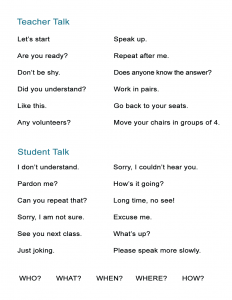
As an ESL teacher, you should repeat phrases like “let’s begin”, “do you understand?” and “repeat after me”. Your students can use phrases such as “please say that again”, “I don’t understand” and “please speak more slowly”. We call this “Teacher Talk, Student Talk”. Simply, these are a word bank of useful common phrases in English.
This is why you should stick to common phrases in your ESL lessons or any time of beginner lesson. In order to do this, you will need to build the teacher talk and student talk dialogue from the first class.
In the “Teacher Talk, Student Talk” activity sheet, we have built a list of useful classroom phrases. It’s a good idea to practice them in the first class so students know what you’re talking about. Afterward, you should stick to these classroom phrases.
Your Introduction Class: Expectations, Rules, Handouts, Discipline
Giving your students phrases and a list of rules helps establish the structure for your 1st class.
When you tell your students what you expect from them throughout the year, they now have the foundation to excel in a positive and structured atmosphere.
And everything you do is important. For example, pay special attention to the body language you use and the things you say. Keep things positive.
How do you like these 1st class ideas? What are some activities that you like to teach discipline?

